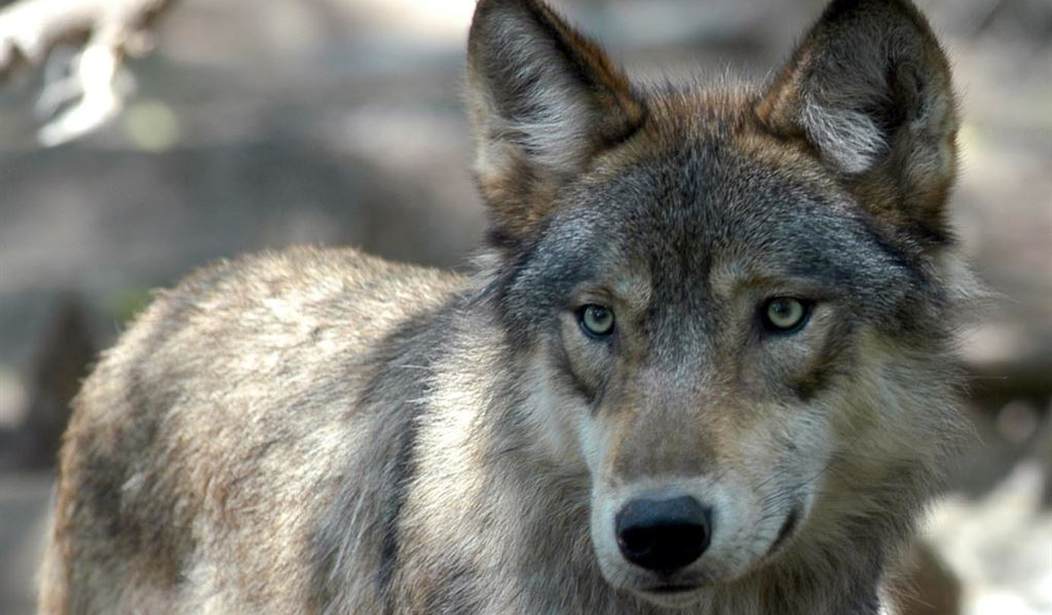The Endangered Species Act, first enacted by Congress in 1973, has since become a poster child for bureaucratic ineptitude. By 2021 it had fully redeemed from the impending extinction only 3% of the hundreds of endangered species initially added to the list.
Our national symbol, the again flourishing bald eagle, is an outstanding exception. The birds are commonly seen soaring above our rivers and lakes wherever the fishing is good.
But whooping cranes are holding onto existence by the skin of their beaks, despite heroic efforts to restore the one-time migrating flocks at a secreted refuge near Baraboo, WI.
Primary responsibilities for administering the restoration programs are divided between two federal agencies: the Fish and Wildlife Service of the US Interior Department and the National Marine Fisheries Service of the US Commerce Department.
FWS oversees projects within the land borders of the United States and its territorial dependencies. The NMFS shepherds species in coastal and territorial waters under the jurisdiction of the United States. The lists comprise some familiar names but with many lesser knowns.
Loosely constructed definitions in the language of the Act confound efforts to issue effective regulations but play to the advantage of advocates who use them to oppose projects or activities they don't happen to like. Vagueness leads to litigation between the agencies and the landowners (farmers and ranchers) and private corporations having interests in the lands for legitimate commercial purposes.
Recommended
Discovery of a single specimen of a threatened species is often sufficient to trigger a desist order, limiting use of a parcel of land. Restrictions may be severe enough to render a property reduced in value such that it cannot be sold to recover investment.
Owners have become sufficiently savvy that if they suspect a member of a listed species inhabits their property, they may quietly make it disappear, rather than report it to federal authorities and risk the economic consequence.
Situations have rendered the governmental agencies and private interests adversaries, with a hapless species being left the worse off.
Vast percentages of the species listed, 97% in fact, instead of being on track toward recovery, languish with little or no prospect of improving circumstances, perilously close to extinction. Too many species have gone extinct since the passage of the Endangered Species Act. Once regarded as hallmark legislation, it has since become a symbol of how not to do successful rescue.
The Northern Spotted Owl, native to the Cascade Range in Washington, Oregon, and northern California, has been such a celebrated shuttlecock. Efforts pitted the owl's advocates and federal agencies against the regional timber industry where lumbering had long played an essential role in the economic life of local communities.
The native owl had built its nest in the dead treetops of Douglas firs. Advocates and their allies in the US Forest Service partnered to set aside stands wherever owls nests were found, and sometimes where there were no nests, designating the locations as critical habitat. And after a time, there were no more harvestable stands, either on public or private lands, and the industry died to save an endangered owl.
But another complication has risen since then. To the horror of the spotted owl advocates, an intruder has made its unwanted presence felt. The more aggressive barred owl from back east has begun to encroach on the old-forest domain of its smaller cousin.
Barred owls, on range formerly restricted to east of the Great Plains, finally completed a long migration across the continent into the protected range of the lesser owl. Forest Service rangers attempted to persuade the interlopers to leave with the help of shotguns-to no avail.
Now the barred owl seems to be hybridizing with the spotted owls. Apparently, the two birds are two closely related species of a genetic feather. It is now anticipated there will be no more representatives of a distinct spotted owl population left to protect in the wild within a few more decades.
Here comes the meat of the drama.
Another recent AP story describes a pending appeal by the Montana Department of Natural Resources and Conservation to have the grizzly bear removed from its listing as an endangered species. It turns out grizzlies have begun to roam north from the Yellowstone National Park boundary to prey upon domestic cattle herds on private lands in Montana. Bear and wolf depredations on elk and mule deer within the park severely depleted those herds, leaving grizzlies with inadequate meat for dinner.
Implicit in the original FWS listing was the false assumption that the grizzly had been in danger of extinction prior to the listing. That simply was not true.
The status of grizzly populations within the boundaries of the contiguous 48 states, both then and now, had no bearing on the viability of bear populations that ranged widely throughout western Canada, Alaska, and other isolated geographic areas in the Northern Hemisphere.
Extirpation within a limited geographic area should never be confused with species extinction.
As with the history of the gray wolf, the long, easily crossed physical border between the US and Canada has always afforded an easy path for counter-migration of apex predators. Neither the grizzly nor the gray wolf was ever in danger of extinction, or an irreversible extirpation in former parts of its US range. Adult pairs could always be reintroduced where there was suitable habitat. The Wisconsin Wolf Restoration Plan proved that fact, to the dismay of the state's dairy farmers and deer hunters.
A return to the good-old days of 50,000 grizzly bears roaming at will over their former range where they no longer exist in most areas west of the Mississippi River would present an awkward inconvenience to current human residents. In areas targeted for reintroduction of grizzlies, resident species like the black bear and cougar that subsist on available elk, deer, and antelope would find themselves hard-pressed indeed.
William D. Balgord, Ph.D., heads Environmental & Resources Technology, Inc. in Middleton, WI, and is a contributing writer for the Cornwall Alliance for the Stewardship of Creation.

























Join the conversation as a VIP Member